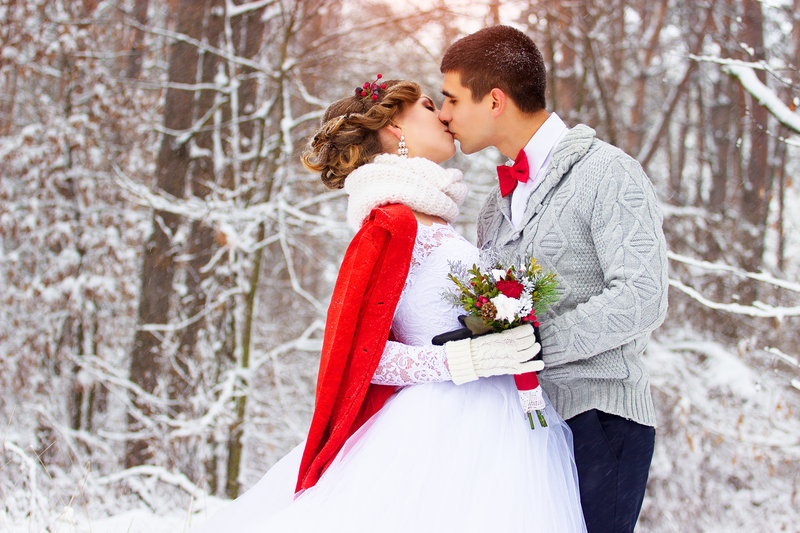Enhancing Your Poinsettias' Lifespan with Care
Posted on 17/08/2025
Enhancing Your Poinsettias' Lifespan with Care
Poinsettias have long been cherished for their vibrant holiday blooms and festive appeal. Native to Mexico and Central America, the poinsettia plant has become a beloved symbol of the winter season in homes and businesses worldwide. However, many people struggle to keep their poinsettia healthy and blooming beyond the holidays. In this guide, we will discuss detailed strategies and proven methods for enhancing your poinsettias' lifespan with care. Read on to unlock the secrets to healthier, long-lasting poinsettias!
Understanding Poinsettia Life Cycle
Before diving into care techniques, it is important to understand the natural cycle of the poinsettia plant. Poinsettias are perennials in their native habitat, meaning, with appropriate care, they can thrive year after year. Many people mistakenly treat them as disposable, tossing them out after their blooms fade post-holidays. However, with the right approach, extending the lifespan of your poinsettias is entirely possible.
- Bloom Period: Late November through January (indoors).
- Rest Period: Late winter to spring, when bracts drop and the plant enters dormancy.
- Regrowth: Spring through early summer, when new growth emerges from the stems.
By recognizing these stages, you can adjust your care routine accordingly.

Optimal Placement for Vibrant Poinsettias
Your poinsettia's lifespan strongly depends on its location. These subtropical plants thrive in bright, indirect light and require stable conditions free from drafts and sudden temperature fluctuations.
- Light: Place your plant near a sunny window where it can receive at least six hours of indirect sunlight daily. Avoid direct afternoon sun, which can scorch the leaves.
- Temperature: Keep the room between 65-75?F (18-24?C) during the day, dropping no lower than 60?F (15?C) at night.
- Humidity: Poinsettias prefer moderate humidity. If your home is dry, especially in winter, use a humidifier or place a tray of water and pebbles near the plant.
- No Drafts: Avoid areas near heaters, air vents, and doorways. Sudden temperature drops or blasts of hot air can shorten the poinsettia's blooming period.
Common Mistakes in Placement
- Placing poinsettias near cold windows may cause leaf drop.
- Positioning them too close to heating vents can dry out the soil and stress the plant.
Tip: Rotate the plant every week to ensure even light exposure.
Watering for Longevity
Proper watering is the most crucial factor in enhancing your poinsettia's life. Too much or too little water can both be detrimental. Here's how to provide just the right amount:
How to Water Your Poinsettia
- Check Soil Moisture: Stick your finger into the soil up to an inch deep. Water only when it feels dry at that depth.
- Water Thoroughly: When watering, do so until water drains out the bottom of the pot--ensuring proper root hydration.
- Remove Excess Water: Never let the plant sit in standing water. Always empty the saucer to prevent root rot.
- Avoid Overwatering: Soggy soil leads to fungal diseases and quickly weakens the plant.
Seasonal Watering Adjustments
- During Bloom: The plant needs more water while in full bloom (November-January).
- Dormancy: Water less as the leaves drop and growth slows down--typically in late winter to early spring.
Fertilizing for Maximum Growth
Nutrient-rich soil and balanced fertilization are key to poinsettia longevity. After the blooming phase, the plant expends a lot of energy, so replenishing nutrients is essential.
Choosing the Right Fertilizer
- Use a balanced, all-purpose houseplant fertilizer (such as 10-10-10 or 20-20-20).
- Dilute fertilizer to half the recommended strength to avoid burning the roots.
- Fertilize once every 2-4 weeks after new growth appears in spring until late summer.
- Do not fertilize while the plant is in bloom or dormant, as this may damage the roots.
Pro Tip: Organic fertilizers like fish emulsion or compost tea can gently feed your poinsettias without the risk of salt buildup.
Repotting and Pruning: Essential for a Longer Lifespan
Repotting and pruning help maintain healthy roots and encourage fuller growth for next year. Here's how:
How to Repot a Poinsettia
- Choose a pot only 1-2 inches larger in diameter than the current one.
- Use a well-draining commercial potting mix formulated for indoor plants.
- Repot in spring, when you see new growth.
- After repotting, water thoroughly and place in indirect light.
How to Prune Your Poinsettia
- As flowering ends (usually in March or April), cut the stems back to 4-6 inches above the soil to encourage bushier growth.
- Remove faded or damaged leaves and stems throughout the year.
- Pinch back new shoots during the summer to shape and thicken the plant.
Regular pruning prevents legginess and promotes more vivid bracts next blooming season.
The Importance of Light and Darkness Cycles
To extend the lifespan of poinsettias and ensure vibrant color for the next holiday season, you must recreate their native light cycles. Poinsettias are short-day plants, meaning they require long periods of darkness to set buds and change leaf color.
How to Trigger Reblooming
- Starting in late September or early October, provide at least 14 hours of complete darkness each night (for about 8-10 weeks).
- Cover the plant with a box or place it in a closet from early evening until morning.
- During the days, return it to a well-lit area for 6-10 hours.
- Continue this routine until bracts begin to color up for a Christmas display.
Note: Even a small amount of artificial light during the dark period can interfere with bud development and bract color.
Managing Pests and Diseases
To maximize the lifespan of your poinsettias, keep a watchful eye out for pests and disease. Early intervention is crucial for maintaining plant health. Here are some common issues:
Common Poinsettia Pests
- Whiteflies: These tiny insects appear on the undersides of leaves. Wash them off with water or use insecticidal soap.
- Spider Mites: Webbing and speckled leaves indicate mites. Increase humidity and treat with a gentle miticide if needed.
- Mealybugs: Look for cottony blobs on stems. Remove them manually and treat with horticultural oil.
Common Diseases
- Root Rot: Caused by overwatering. Repot in fresh, dry soil and cut away affected roots.
- Leaf Spot: Appears as brown or yellowish spots. Remove affected leaves and keep foliage dry.
Healthy plants are far less susceptible to common problems. Reduce risk by practicing good watering and hygiene.
Post-Holiday Poinsettia Care: A Year-Round Guide
Want to keep your poinsettias thriving long after the decorations are stored away? Follow this simple month-by-month checklist:
- January-March: Continue to water when dry and provide bright, indirect light. Expect bracts (colored leaves) to fade and drop.
- April: When all leaves and bracts fall, prune stems to 4-6 inches. Reduce watering frequency.
- May-June: Repot if needed. Move the plant outside (in the shade) if temperatures are consistently above 60?F (15?C). Increase watering as new growth emerges. Begin light fertilizing.
- July-August: Pinch back stems to encourage bushiness. Keep fertilizing and watering regularly. Ensure the plant is not exposed to direct midday sun.
- September-October: Bring the plant indoors before night temperatures fall below 55?F. Start the 14-hour darkness regimen to encourage reblooming.
- November-December: Place in a prominent spot and enjoy the vibrant display as bracts return to color.
Frequently Asked Questions about Poinsettia Lifespan
How long can a poinsettia live with proper care?
With attentive year-round care, poinsettias can live and bloom for years. It's not uncommon for well-cared-for plants to last 5-10 years, with annual regrowth and vibrant color displays.
Why are my poinsettia leaves turning yellow and dropping?
This is typically a sign of improper watering--either too much or too little. Assess soil moisture, inspect for root rot, and ensure stable temperature conditions.
Can I grow poinsettias outdoors?
In USDA zones 9-11, poinsettias can grow outdoors year-round. In cooler climates, bring outdoors for the warm months, but move inside before night temperatures approach 55?F (13?C).

Extra Tips for Enhancing Poinsettia Longevity
- Keep poinsettias away from pets and children--they are not highly toxic but can cause irritation if ingested.
- Dust the leaves occasionally to allow the plant to absorb light more effectively.
- If the plant looks leggy or thin, increase light or prune back stems to stimulate fullness.
- For a more dramatic rebloom, consider grouping several plants together for a lush appearance.
Conclusion: Enjoy Healthy, Vibrant Poinsettias Year After Year
Enhancing your poinsettia's lifespan with care is a rewarding process that transforms a seasonal decoration into a long-term living treasure. By carefully managing light, water, nutrients, and temperature--and understanding the poinsettia's natural cycles--you can keep this festive plant healthy and thriving well beyond the winter months. Not only will your home remain bright and inviting, but you'll also enjoy the satisfaction of nurturing nature's holiday jewel year after year.
Ready to get started? With the comprehensive strategies above, you can maximize the lifespan of your poinsettia and enjoy their brilliant color and beauty well into the future. Happy growing!
Latest Posts
3 Essential Ways to Extend the Freshness of Your Bouquets
7 Amazing Tulip Facts That Will Ignite Your Curiosity
Flourishing Orchids: A Care Strategy






